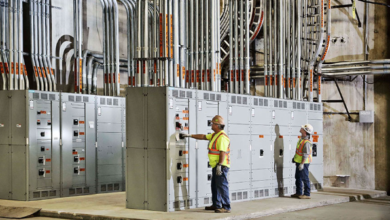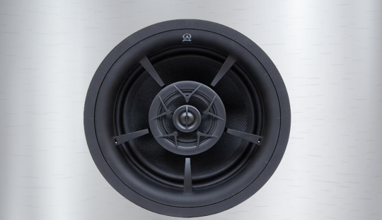Reliable Portable Power Stations for Every Situation

Introduction
Having a steady and dependable power source has become essential in today’s world. Whether you are camping, preparing for emergencies, or need a backup power supply, a portable power station provides a clean and efficient energy solution. These compact battery-powered units offer a quiet, eco-friendly alternative to traditional generators. In this article, we will explore how these power stations function, highlight top-rated options, and provide essential maintenance tips.
What Is a Portable Power Station?
A portable power station is a rechargeable battery-powered device designed to supply electricity on the go. Unlike gas-powered generators, these stations store energy using high-capacity lithium-ion or lithium-iron-phosphate (LiFePO4) batteries, making them environmentally friendly and quiet.
Key Features of Portable Power Stations
- Battery Capacity: Measured in watt-hours (Wh), battery capacity determines how much energy can be stored and used.
- Charging Methods: These stations can be charged through multiple sources, including:
- AC Charging: Standard wall outlets for fast charging.
- Solar Charging: Compatible with solar panels, ideal for off-grid use.
- Car Charging: Charge using a vehicle’s 12V socket.
- Output Ports: A variety of ports are available for different devices, including:
- AC Outlets: For laptops, small appliances, and home electronics.
- USB-A & USB-C Ports: Ideal for smartphones, tablets, and other gadgets.
- DC & Car Ports: Useful for running 12V devices such as mini-fridges and CPAP machines.
Top Portable Power Stations
Nature’s Generator ELITE 3600 WATT
The Nature’s Generator Elite 3600 Watt is a high-capacity portable power station designed for home backup, outdoor activities, and emergency power needs. It provides 3,600 watts of continuous power and a 7,200-watt peak surge capacity, making it suitable for running a variety of household appliances, power tools, and electronic devices.
Key Features:
- Battery Type: Sealed lead acid (SLA) battery
- Battery Capacity: 1,200Wh (expandable with additional power pods)
- Inverter Output: 3,600W continuous, 7,200W surge (pure sine wave)
- Charging Options:
- Solar Charging – Compatible with Nature’s Generator solar panels
- Wind Charging – Supports wind turbine input
- AC Wall Outlet Charging – Plug into standard wall outlets
- Output Ports: Multiple AC, USB, and DC ports for various devices
- Expandability: Can connect to power pods for increased energy storage
See also: AI Image Generators and the Rise of Virtual Influencers
Duracell Portable Power Station 1000
The Duracell Power 1000 is a compact and efficient power station, perfect for backup energy at home or on the road. It offers 1,000 watts of output and supports various charging methods, including AC, car, and solar charging (solar panels sold separately). A built-in LCD screen provides real-time battery status and power consumption details.
Specifications:
- USB Ports: Two USB-A, two USB-A QC3.0 (up to 18W), one USB-C PD (100W)
- AC Output: 120V pure sine wave inverter
- DC Outputs: One 12V DC socket, two 13V DC ports
- Weight: 24.6 lbs, compact design
- Operating Temperature: 32°F to 113°F
Goal Zero Yeti 1500X Portable Power Station
The Goal Zero Yeti 1500X is another top-tier power station, featuring a 1,516Wh lithium-ion battery that can power essential devices during outages or outdoor adventures. Its 2,000W AC inverter allows it to support multiple appliances simultaneously. Advanced solar compatibility and a built-in MPPT controller enhance its efficiency.
Specifications:
- Battery: Lithium-ion NMC, 1,516Wh capacity
- Charging Options: AC charging (up to 600W), Solar charging (up to 600W input)
- Lifecycle: Up to 500 cycles at 80% capacity
- Charging Times:
- 100W solar panel: 18-36 hours
- 400W solar panel: 4-8 hours
- 1200W solar panel: Approx. 3 hours
Tips for Using and Maintaining Your Power Station
Extending Battery Life
- Avoid Deep Discharges: Recharge the battery before it drops below 20% to extend lifespan.
- Match Power Output: Use devices within the power station’s capacity to avoid overloading.
- Charge Regularly: If unused, charge every three months to maintain battery health.
Proper Storage and Safety Precautions
- Store in a Cool, Dry Place: Avoid exposure to extreme temperatures and moisture.
- Keep It Clean: Protect it from dust and debris to maintain performance.
- Prevent Overcharging: Unplug from the charger once fully charged to avoid overheating.
Charging Tips for Efficiency
- Use Recommended Chargers: Always use manufacturer-approved adapters and solar panels.
- Optimize Solar Charging: Place solar panels in direct sunlight for the best results.
- Monitor Battery Health: Utilize display indicators or apps to track battery performance.
Conclusion
Investing in a portable power station is a smart choice for those needing reliable, clean, and efficient energy solutions. These power stations are excellent for camping, home backup, and emergencies, offering an eco-friendly alternative to gas generators. We’ve covered some of the top options, each with unique features and capabilities. By following the best practices for maintenance and charging, you can maximize the efficiency and lifespan of your power station, ensuring long-term reliability for all your energy needs.





